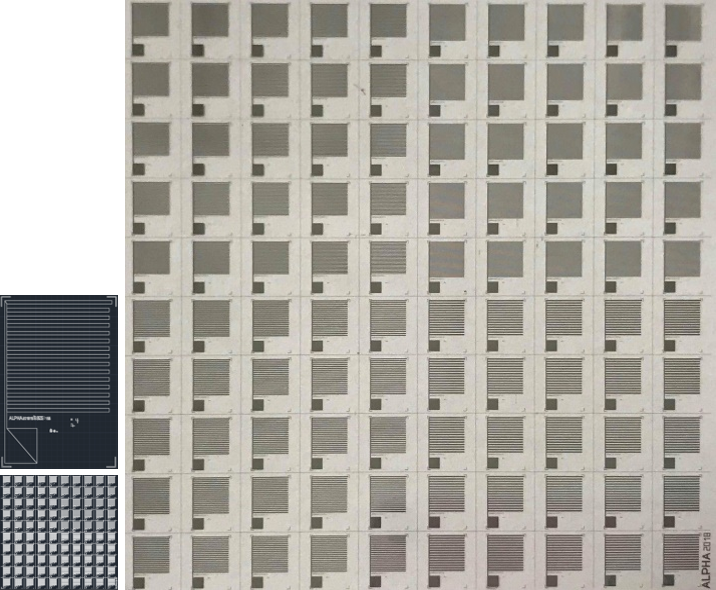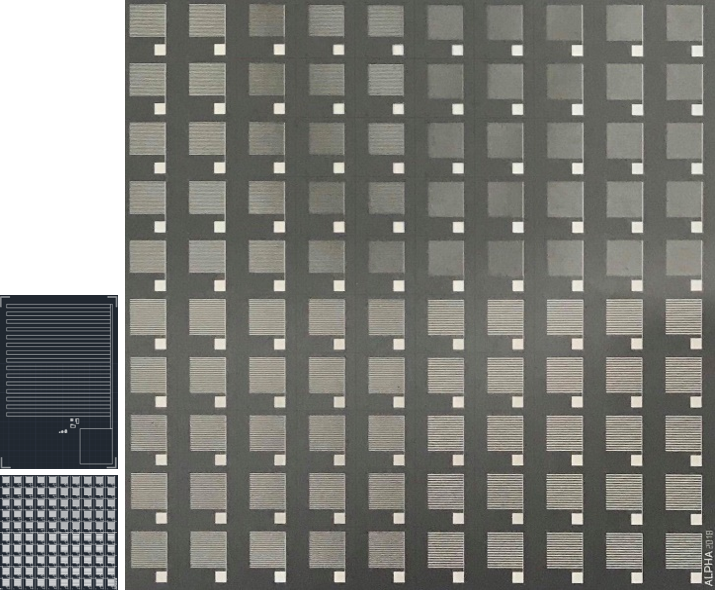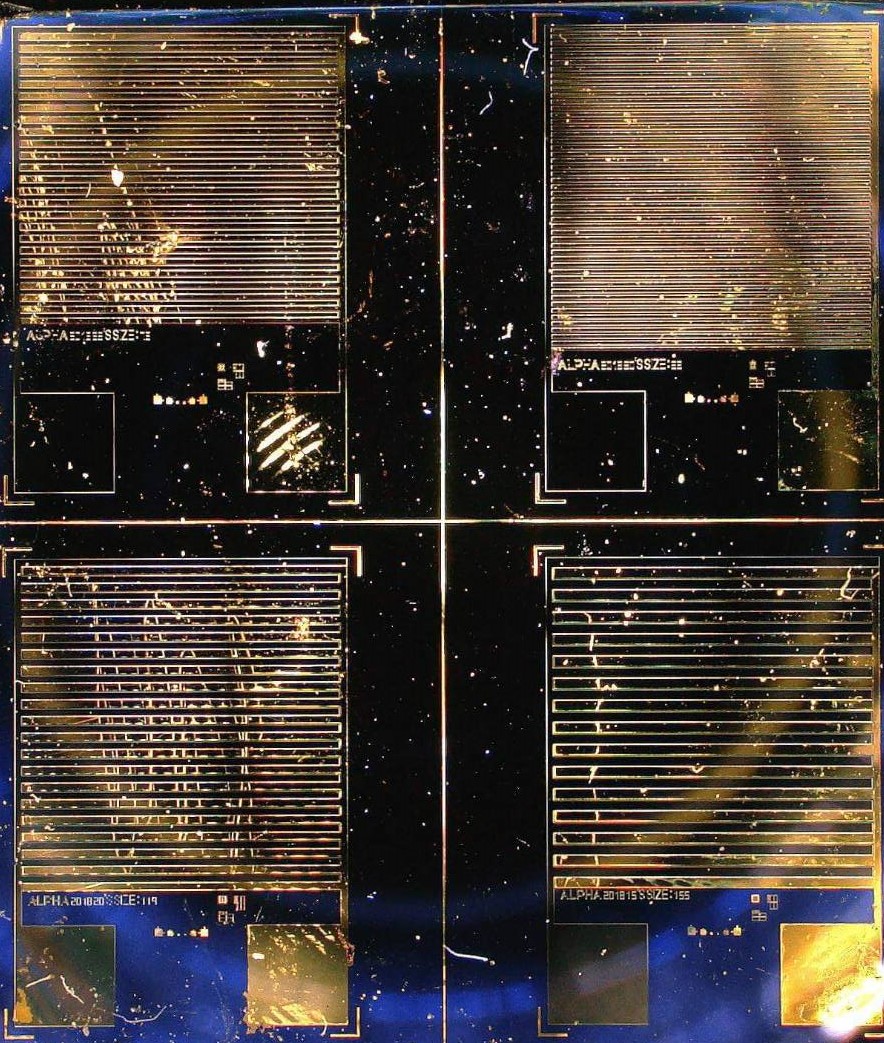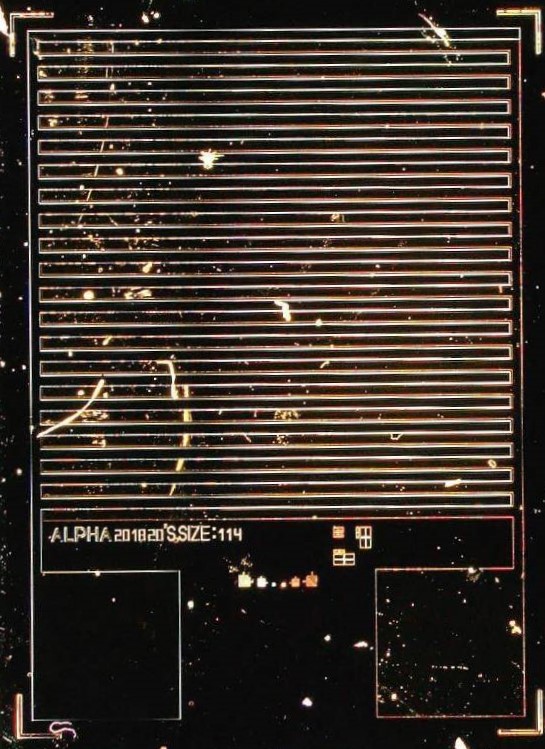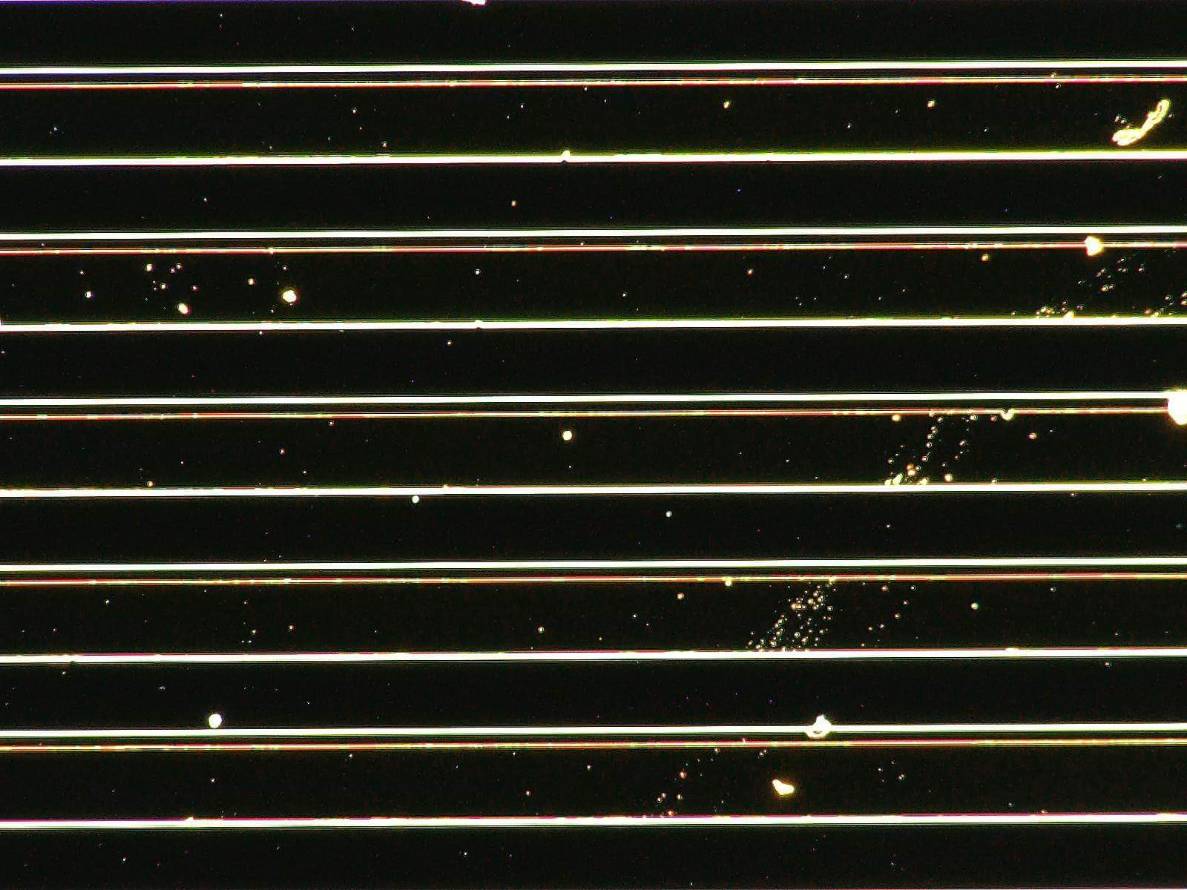Photoresist is a light-sensitive substance that responds specifically to ultraviolet light, that is the reason why the lithography process is carried out in the room with yellow light. The photoresist can be temporarily coated on the upper surface of the chip, and the design pattern is transferred thereon by exposure. The method can be divided into positive photoresist and negative photoresist according to whether or not dissolved after exposure. The method used in this experiment is positive photoresist. After the development technique, the exposed portion is dissolved. Although the cost of positive photoresist is higher than negative photoresist, the resolution is better.
The coating of hexamethyldiamine (HMDS) before the photoresist increases the adhesion of the photoresist to the chip surface. The key to determining the pattern is the mask. After using the computer software AutoCAD to export the electrode pattern, you can entrust the company to make it. The development is the softening of the dissolved photoresist after it exposed to the ultraviolet light. Excessive development may cause partial erosion of the electrode, and if it is not developed completely, the completion degree of the electrode may be poor.
The etching method in this experiment is wet etching, and the substrate is immersed in an etching solution to etch the graphene covered by the photoresist, wherein the etching solution is a mixture of hydrochloric acid, water and nitric acid in a specific ratio. Evaporation is a coating technique in which a material to be vaporized is heated by a resistor or an electron beam to a melting temperature under high vacuum conditions to evaporate atoms and reach and adhere to the surface of the substrate. During the evaporation process, the substrate temperature has a significant influence on the properties of the deposited film. Usually, the substrate also needs to be heated appropriately so that the vapor-deposited atoms have sufficient energy to move freely on the surface of the substrate to form a uniform film.
First, the glass substrate with ITO was immersed in acetone at the ultrasonic for 5 min to remove the organic particles, then it was immersed in methanol at the ultrasonic for 5 min to remove acetone, then finally it was immersed in distill water (DI water) at ultrasonic for 5 min. Then the glass was dried by nitrogen blowing after completing the above clean process. Before device process, testing the resistance of two sides of sample to find the ITO layer is necessary. Then baking it for one5 min at onetwo0°C to prevent the residual -OH sites. The ITO layer was firstly applied HMDS to enhance PR adhesion, which performed in a spin coater with 3000 rpm for one0 s at one step to spray out the residue and 5000 rpm for two0 s at two step to control the thickness. Sending PR-coated ITO to do soft baking for two min at 90°C to let PR dried a little and enhance the adhesion. After a soft baking, exposing the pattern through the designed mask irradiating at a 365 nm ultraviolet light from a mercury lamp for two.5 s. A positive PR is chosen in the photolithography. The part opened in the mask, which is not covered by the hard mask of Cr, can be used to defined the illumination area. Photoresist with illumination should be baked after exposure for one min at 90°C to prevent erosion ripples around the chip before developing. Then, the chip was soaked in the developer, AZ300MIF, and shacked to remove the exposured photoresist. The remained PR has to be observed in an optical microscope. If the critical patterns matched to our designs then the device can be sent to do hard baking at onetwo0°C for one5 min. Soak the developed ITO in the etchant for approximately one0 min. The formula of etchant is hydrochloric acid 36%, nitric acid 70% and DI water with a ratio of 50:3:50. After wet etching process, the sample immersed in acetone and shack it to get rid of PR and the pattern of ITO electrode would be obtained clearly. Finally, the glass substrate printed with the first electrode was placed in a one00% acetone shake to remove the photoresist, and the first electrode on the chip was completed.
After confirming the state of the first electrode by the optical microscope and alpha stepper, the process of the second electrode will be performed on the same chip. The chip was immersed in acetone at the ultrasonic for 5 min to remove the organic particles or dust, then it was immersed in methanol at the ultrasonic for 5 min to remove acetone, then finally it was immersed in DI water at ultrasonic for 5 min, which the chip was dried by nitrogen blowing. Baking at onetwo0°C for one5 min can be used to remove surface moisture and improve the adhesion to photoresist. Similar process of the first photolithography will be performed for the second photolithography for the lift off process of Au electrode. With the patterns designed in the mask and alignment to the electrodes in the first lithography, a inversed patterns of Au electrodes could be fabricated on chip surface by the photoresist. A Ti layer of one00 Å and a gold layer of approximately one500 – one600 Å is evaporated by a thermal evaporator. To have a high uniformity, the thermal evaporator system has to be pumped to high vacuum (~one0-6 torr). two tungsten boats are used to put Ti and Au material, which could be melt and evaporated with a high current passed through. With a monitor by QCM, the thickness of Ti and Au could be easily obtained by the current level and process time control. After evaporation, whole chip could be put in the acetone to remove the photoresist and the Ti/Au on it. Remained Ti/Au layer with the designed patterns could be transferred to chip to be the second electrodes.

